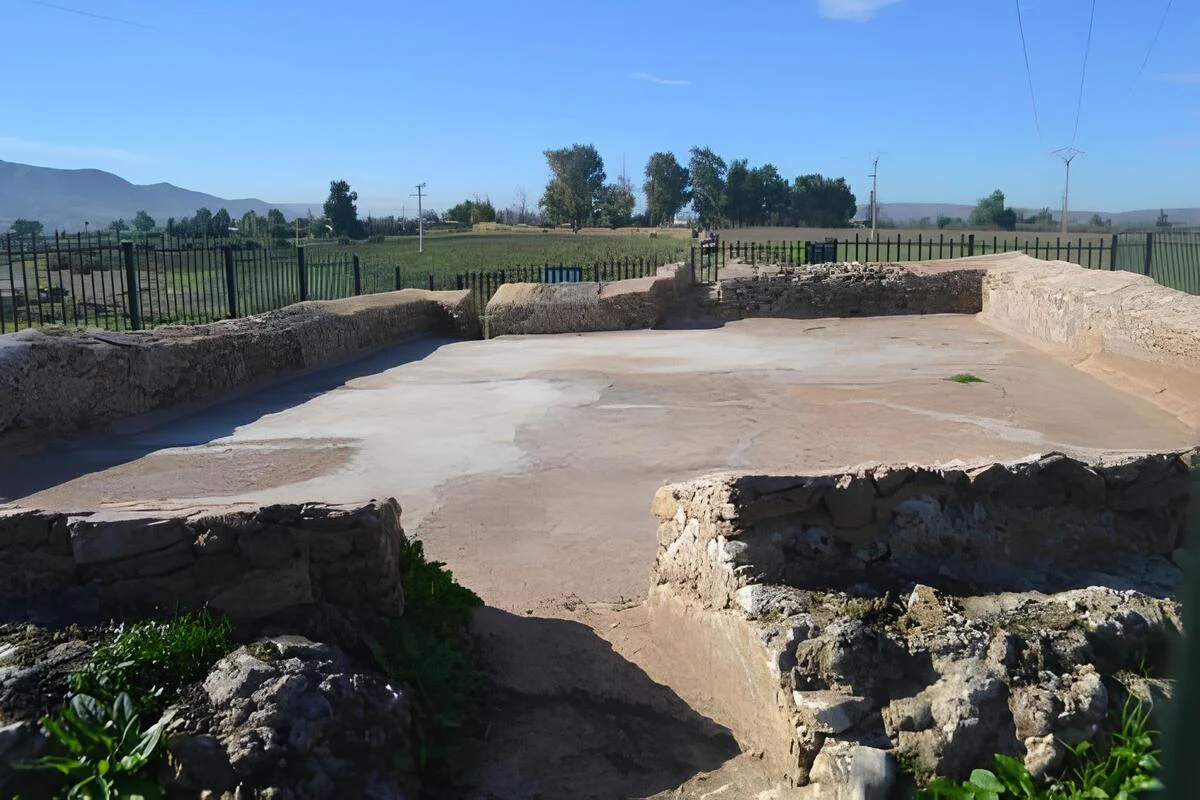Tigava Castra and Tigava Municipium are two ancient Roman sites located on both banks of the Chelif, a few kilometers west of the current city of El Attaf, in the wilaya of Aïn Defla, Algeria. The toponym, probably of Berber origin, means “burned” with lexical roots such as Tigava, Tiganda, tigauda, or tigaba. The name of the site appears under different spellings on milestones, in Pliny (Tigavae), in the geographer Ptolemy, in the Antonine Itinerary, and in Ammianus Marcellinus, as well as in the passion of Typasius.
In the 2nd century, Tigava was an element of the African limes organized under the Antonines. A road crosses the hinterland of Mauretania Caesariensis, passing through Castellum Tingitanum (El Asnam), Tigava, Rapidum, Auzia (Aumale), and joining Numidia via Sitifis (Sétif) and Cuicul (Djémila). Tigava is also the place of martyrdom of Saint Tipasius (died around 297) in Mauretania Caesariensis.
Site Remains
Among the remains, only an aqueduct remains from the ancient Tigava Municipium. This hydraulic work, probably dating from the 1st century AD, was essential for the water supply and irrigation of the agricultural lands of the Chelif plain. The aqueduct, built in layers of bricks and superimposed blockages, measures 1.16 m in width and remains at a height of 3 m. It starts from the northeast side (Ain Tamdouit in the commune of Tacheta) and extends about a kilometer southwest to a cemented reservoir of 10.30 m by 7 m, with three openings.
In poor condition, the aqueduct required preservation measures. After the classification of the monument, the culture directorate of the wilaya of Ain Defla carried out an operation of development and restoration, including the installation of fences, the restoration of the aqueducts with compatible materials, and the establishment of technical sheets to identify the monument.
Tigava Castra and Tigava Municipium are two ancient Roman sites located on both banks of the Chelif, a few kilometers west of the current city of El Attaf, in the wilaya of Aïn Defla, Algeria. The toponym, probably of Berber origin, means “burned” with lexical roots such as Tigava, Tiganda, tigauda, or tigaba. The name of the site appears under different spellings on milestones, in Pliny (Tigavae), in the geographer Ptolemy, in the Antonine Itinerary, and in Ammianus Marcellinus, as well as in the passion of Typasius.
In the 2nd century, Tigava was an element of the African limes organized under the Antonines. A road crosses the hinterland of Mauretania Caesariensis, passing through Castellum Tingitanum (El Asnam), Tigava, Rapidum, Auzia (Aumale), and joining Numidia via Sitifis (Sétif) and Cuicul (Djémila). Tigava is also the place of martyrdom of Saint Tipasius (died around 297) in Mauretania Caesariensis.
Site Remains
Among the remains, only an aqueduct remains from the ancient Tigava Municipium. This hydraulic work, probably dating from the 1st century AD, was essential for the water supply and irrigation of the agricultural lands of the Chelif plain. The aqueduct, built in layers of bricks and superimposed blockages, measures 1.16 m in width and remains at a height of 3 m. It starts from the northeast side (Ain Tamdouit in the commune of Tacheta) and extends about a kilometer southwest to a cemented reservoir of 10.30 m by 7 m, with three openings.
In poor condition, the aqueduct required preservation measures. After the classification of the monument, the culture directorate of the wilaya of Ain Defla carried out an operation of development and restoration, including the installation of fences, the restoration of the aqueducts with compatible materials, and the establishment of technical sheets to identify the monument.








